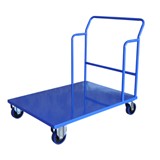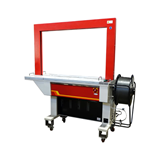Discover why promoting your foreman to operations manager boosts efficiency, cuts costs, and strengthens leadership in Australian industrial businesses. Learn how to support this key transition.
Key takeaways
- Foreman promotions strengthen operations: Promoting from within harnesses firsthand site knowledge, fast decision-making, and proven team leadership for more efficient project delivery.
- Internal hires reduce cost and risk: Compared to external recruitment, promoting a foreman offers quicker adaptation, stronger cultural alignment, and lower onboarding costs.
- Targeted development builds capability: Structured training in digital systems, compliance, and leadership equips foremen to handle the strategic demands of operations management.
- Succession planning drives continuity: Formal pathways from field to management help industrial businesses retain talent and stay competitive in a tight labour market.
- Communication is critical to success: Clear role expectations, IR awareness, and proactive team engagement are essential when transitioning a foreman into a senior role.
- Industry context shapes transition success: Promoting a foreman to operations manager works best when tailored to sector-specific demands, construction, manufacturing, logistics, and mining each require different skills, compliance awareness, and upskilling strategies.
Introduction: Why this leadership shift matters in Australia now
In today’s Australian construction, manufacturing, and industrial sectors, leadership continuity and operational efficiency are critical. Many businesses face challenges such as skilled labour shortages, rising costs, and increasing regulatory demands. One solution gaining momentum is promoting foremen, those on the frontline of site and shop floor management, to operations manager roles.
This transition taps into the detailed operational knowledge and leadership skills of foremen, while also addressing gaps in middle management. As your business navigates a complex labour market and regulatory environment, understanding why and how to promote your foreman to operations manager can provide a competitive edge.
Understanding the foreman’s role as a foundation for operations management
The foreman plays a pivotal role on-site or in manufacturing operations, responsible for supervising teams, ensuring safety compliance, and maintaining productivity. Their daily involvement with workers and operational processes gives them insights many external managers lack.
Key attributes foremen bring to operations management:
- Hands-on experience: Foremen intimately understand the work, equipment, and safety procedures.
- Team leadership: They build rapport and motivate crews, critical for workforce engagement.
- Problem-solving: Foremen resolve operational issues in real-time, from equipment failures to labour shortages.
- Communication: Acting as a bridge between workers and management, foremen translate strategic goals into actionable tasks.
A report from the Australian Industry and Skills Committee (AISC, 2023) found that businesses promoting internal leaders like foremen saw a 20% increase in project delivery efficiency.
The hidden leadership potential in your foreman
Many foremen already perform leadership functions akin to operations managers, though without the formal authority or access to strategic systems. They juggle scheduling, coordinate with clients, manage delays, and resolve conflicts daily.
Their leadership potential is often untapped due to gaps in formal training, strategic exposure, or digital literacy rather than a lack of capability. Typical strengths include:
- Practical knowledge of workflows and hazards, developed through years of hands-on management.
- Strong interpersonal skills, fostering positive morale and mitigating workplace disputes.
- Ownership and initiative, demonstrated by navigating complex operational challenges under pressure.
- Adaptability and resilience, critical in industries like mining and civil construction with dynamic, high-stakes environments.
By formally recognising and upskilling foremen, businesses unlock these latent capabilities, reducing reliance on costly external recruitment and enhancing internal culture.
Cost-benefit analysis: Promoting internally vs hiring externally
Hiring an external operations manager is a high-stakes process. According to data from SEEK, the average time-to-fill for mid-to-senior operations roles in Australia ranges between 40 and 50 days. Factoring in recruiter fees, onboarding costs, and training time, businesses can spend upwards of $20,000 to $25,000, without any guarantee of long-term fit.
Promoting from within offers a faster, more cost-effective alternative:
- Quicker ramp-up time, as the promoted foreman already understands your systems, people, and priorities
- Lower recruitment costs, avoiding agency fees and lengthy hiring delays
- Stronger cultural fit, since they’re already aligned with your safety practices, values, and work style
- Better retention outcomes, with promoted employees more likely to stay loyal to a business that invests in their growth
There are still investments required, such as leadership mentoring, digital onboarding, and transitional support, but these are typically much lower than the cost of a mis-hire.
Case example: A Queensland-based plant hire company recently promoted its senior foreman to operations manager after a period of structured shadowing. With just three months of internal coaching, the foreman was fully transitioned, at a total cost of under $5,000. The business avoided six weeks of recruitment downtime and reports that jobsite efficiency has improved by more than 15% across two locations.
Technology and digital skills development for new operations managers
Transitioning into operations management means moving beyond clipboards and whiteboards. Digital platforms now sit at the centre of project planning, asset tracking, safety management, and reporting. For a foreman to succeed in this role, upskilling in key technology is essential.
Some of the most common systems new operations managers will need to master include:
- Job and project management software – such as AroFlo or SimPRO, which help schedule tasks, track costs, and manage project timelines
- Safety and compliance tools – including platforms like HammerTech or SiteDocs, which document inductions, incidents, and compliance workflows
- Asset and fleet tracking platforms – such as Fleet Complete, which assist in maintaining vehicles and coordinating mobile resources
- Workforce communication tools – like Microsoft Teams or Slack, which streamline coordination with upper management or other departments
- Digital reporting systems – enabling more transparent, real-time updates for internal stakeholders or clients
Rather than expecting immediate fluency, provide practical pathways for development. Many software providers offer user-friendly onboarding, while industry-specific training programs, through TAFE or peak bodies, can fill any knowledge gaps.
Structured onboarding plans should also give the foreman a “safe space” to experiment with tools without risk. Shadowing an existing operations manager, attending software walkthroughs, and using training accounts can all help build confidence.
Tailoring foreman-to-ops-manager transitions by industry
While the benefits of promoting a foreman may apply broadly, the operational demands, and leadership expectations, can vary significantly by industry. Here's how this transition typically plays out in key Australian sectors:
Construction
Why it works well:
- Foremen already manage subcontractors, materials, safety, and timelines, core ops manager tasks.
- Familiarity with local WHS laws (e.g. Model WHS Act) makes for easier compliance transitions.
Challenges:
- Jumping from site coordination to broader strategic planning can be a steep learning curve.
- IR issues can emerge if unions perceive favouritism or lack of qualification.
Tip: Support with project management certifications (e.g. Cert IV in Project Management or Diploma of Building and Construction) can accelerate readiness.
Manufacturing
Why it works well:
- Foremen often have deep knowledge of lean processes, quality assurance, and shift scheduling.
- Promoting from within improves retention, a major challenge, with 32% turnover in some Australian manufacturing facilities (Ai Group 2024).
Challenges:
- Operations managers in manufacturing often handle compliance with ISO standards and procurement, areas foremen may lack exposure to.
Tip: Upskilling in ERP platforms (e.g. SAP or Pronto), combined with mentoring from finance leads, helps close the strategy gap.
Logistics and transport
Why it works well:
- Many foremen already handle fleet scheduling, depot coordination, and safety briefings.
- Familiarity with Chain of Responsibility (CoR) laws means fewer compliance missteps in new role.
Challenges:
- Scaling up to manage multi-depot operations or negotiate with third-party freight providers may be new territory.
Tip: Give future ops managers visibility into supply chain planning tools and regulatory bodies like NHVR early in their development.
Civil and mining
Why it works well:
- Foremen are already used to large-scale job planning, shift rotations, and environmental compliance.
- In remote worksites, promoting trusted internal leaders can boost morale and reduce fly-in-fly-out (FIFO) churn.
Challenges:
- Ops managers must coordinate multiple stakeholders, including Indigenous land groups, state regulators, and contractors.
Tip: Formalise pathways to ops management via tailored leadership programs run in partnership with providers like TAFE Queensland or AMMA.
Practical challenges in promoting a foreman to operations manager
While foremen possess operational strengths, stepping into an operations manager role introduces new demands:
1. Developing strategic thinking
Operations managers must plan long-term projects, allocate resources, and balance budgets. Foremen transitioning up need training in strategic planning, financial literacy, and risk management.
2. Expanding leadership skills
Managing middle management teams and liaising with clients requires enhanced communication and delegation skills beyond frontline supervision.
3. Navigating regulatory compliance
Operations managers handle complex compliance issues, including workplace health and safety (WHS), environmental standards, and industrial relations. Understanding these frameworks is essential.
4. Balancing operational pressure with administrative duties
Operations managers juggle on-the-ground issues with reporting, data analysis, and continuous improvement initiatives, requiring strong organisational skills.
Emerging trends supporting foreman-to-operations manager transitions
Skills shortages and workforce retention
Australia’s skilled trades shortage is at a critical point. The National Skills Commission (2024) reports that 70% of construction firms struggle to fill management roles. Promoting foremen helps retain talent and fill leadership gaps internally.
Upskilling and leadership development programs
Australian organisations increasingly invest in tailored leadership development, blending technical skills with management training to support internal promotion pathways.
Emphasis on safety leadership
With WHS regulations tightening, foremen with hands-on safety expertise make ideal candidates for leadership roles focused on embedding safety culture.
How to successfully manage the transition in your business
Step 1: Identify suitable candidates
Look beyond technical skills, assess emotional intelligence, communication abilities, and willingness to learn.
Step 2: Provide targeted training
Include modules on:
- Financial management and budgeting
- Project management tools and software
- Compliance and risk management
- Leadership and people management
Step 3: Offer mentoring and support
Pair new operations managers with experienced leaders for guidance during their transition.
Step 4: Adjust role expectations gradually
Allow for a phased increase in responsibility, balancing operational tasks with strategic duties.
Case study: Australian construction firm boosts efficiency by promoting foremen
Melbourne-based builder “BuildRight Pty Ltd” faced delays and high turnover in their project management team. By promoting two senior foremen into operations manager roles, combined with structured leadership training, they improved project delivery times by 15% and reduced labour turnover by 25% over 18 months. Workers reported stronger engagement, citing trust and respect for managers with hands-on site experience.
Compliance considerations for internal promotions
Operations managers carry compliance responsibilities that must be met to avoid penalties:
- WHS compliance under Safe Work Australia guidelines
- Environmental management under state regulations
- Fair Work Act adherence in labour relations
- Accurate reporting and record-keeping
Businesses should ensure promoted staff understand these frameworks and have access to ongoing compliance training.
Conclusion: Why your next operations manager could already be on your site
Promoting foremen into operations management roles offers Australian businesses a practical, cost-effective way to address leadership shortages, improve operational efficiency, and boost workforce morale. With targeted support and development, your foreman’s frontline expertise can translate into strategic advantage and business growth.
Start by identifying potential leaders within your teams, invest in their development, and watch your operations thrive in today’s competitive landscape.





-160x160-state_article-rel-cat.png)
